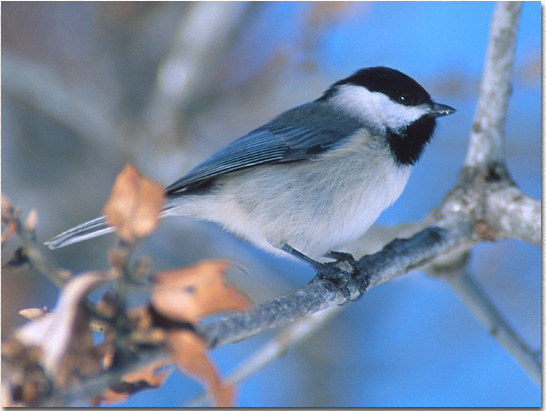| Description:
4-5" similar to more northern Black-capped
Chickadee, but feathers of folded wing usually show less
white edging; lower edge of black bib more sharply defined
than in Black-capped, best identified by voice and range |
Habitat:
Mixed deciduous-coniferous forests, woodland edges, swampy areas, clearings, fields, thickets, orchards, suburbs, valleys, foothills. Where ranges overlap, found at lower elevations than Black-capped Chickadee. Prefers woods more than Black-capped. |
| Nesting:
6-8 white eggs lightly speckled with brown placed in a
cavity in a rotten scrub or nest box, lined with feathers,
grass and plant down |
Range:
resident from southeastern Kansas and New Jersey south
to Texas Gulf Coast |
| Voice: A
buzzy chickadee -dee-dee, higher pitched and faster
than that of the Black-capped Chickadee, song has 4 whistled
notes, see-dee, see-dee, with downward inflection,
rather than the 2 or 3 note BC Chickadee song |
Diet:
insects, seeds, fruit, including spiders and their eggs; seeds.
|

